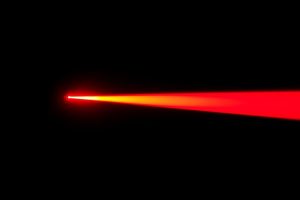Sometimes known as photo eyes, photoelectric sensors emit a beam of light that is used to detect the presence or absence of items and equipment, or changes in surface conditions. When the emitted light is interrupted or reflected back by the object, the change in light patterns is measured by a receiver, thus the target object or surface is recognized. Photoelectric sensors are very common in industrial manufacturing fields, such as packaging, food and beverage, medical, material handling, along with many others.
A photoelectric sensor consists primarily of an Emitter for emitting light, and a Receiver for receiving light. When emitted light is interrupted, it changes the amount of light that arrives at the Receiver. The Receiver then detects this change and converts it to an electrical output. The light source for the majority of photoelectric sensors is infrared or visible light (generally red, or green/blue for identifying colors).
There are various types of photoelectric sensors depending on the environment or installation location. These are the most common:
Through (or opposed) beam:
The emitter and receiver on thru-beam sensors are aligned opposite one another. The advantage of this is that the light reaches the receiver directly and long detection ranges and high excess gain can therefore be achieved. These sensors are capable of reliably detecting almost any object. The angle of incidence, surface characteristics, color of the object, etc., are irrelevant and do not influence the functional reliability of the sensor.
Retroreflective:
The emitter and receiver are aligned in a housing such that the retroreflective sensors are easy to install. Simply position a reflector on the opposite side and align the sensor with it. The standard version featuring a polarization filter combines the installation benefits offered by the retroreflective system with the reliable detection, even of reflective objects, at long detection ranges. The retroreflective sensors for clear object detection are ideal for reliably detecting transparent objects.
Diffuse (proximity sensing):
Diffuse mode sensors are particularly easy to install, since only one device has to be fitted and no reflector is required. These sensors operate primarily at close range, feature optimum switching accuracy, and can reliably detect even very small objects. The sensors with background suppression sense only a specific area in front of the sensor. The sensor ignores any objects that are outside of this area. Sensors with background suppression are also insensitive to interfering objects in the background and are still extremely precise. Sensors with background evaluation are always used in applications with a fixed background in the measuring range with which you can align the sensor.
The incredibly high resolution achieved with photoelectric sensors derives from advanced design technologies that yielded a very small spot beam with a unique optical system for receiving light. This enables them to detect very small objects, as well as exact position detection.
Because of the ‘working conditions’ of a photoelectric sensor, it’s imperative that each part is manufactured to the most detailed specifications. At Universe Optics, we pride ourselves on making sure that the precision optical lens we design and manufacture fits within the parameters of your particular model.
Universe Kogaku designs and manufactures optical lenses for photoelectrical sensors, security, high tech and electronic applications. We stock 1000’s of standard lens assemblies and can custom design a solution for scanners, CCTV, CCD/CMOS, medical imaging, surveillance systems, machine vision and night vision systems.